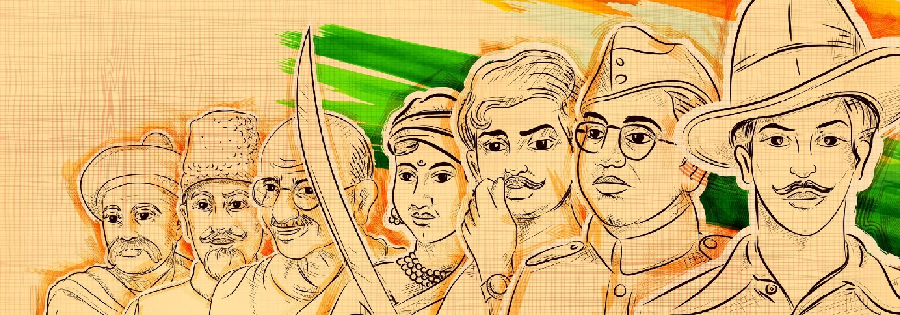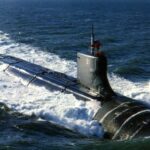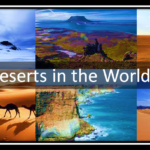Who are the freedom fighters, what are they up to, and for what cause do they fight? An actual freedom fighter is a person who defies the political status quo in order to uphold his/her personal liberties and those of his/her people. However, it is not uncommon for someone who took part in a nonviolent protest for freedom to be referred to as a political leader rather than a freedom fighter.
In India, the title “freedom fighter” is reserved for individuals who actively participated in the country’s struggle for independence; nevertheless, members of revolutionary movements all over the world can also be considered freedom fighters. So, without further ado, here are the 10 most well-known freedom fighters of India.
Famous Freedom Fighters of India
Here we have shared the name of 10 most famous freedom fighters of India below:
Mahatma Gandhi
There is no need to introduce Mahatma Gandhi or Mohandas Karamchand Gandhi. His status as a leader in the Indian independence struggle and an inspiration to civil rights activists throughout the world puts him at the pinnacle of the movement.
A year after his exile ended in 1915, Gandhi returned to India and started his anti-discrimination campaign among Indian farmers and labourers. His nonviolent activities against British persecution, religious concord, and the abolition of untouchability reached all corners of the country during this time period.
Gandhi began his legal career in South Africa when he was just 23 years old, spending the next two decades there. After seeing racial prejudice for the first time, he decided to establish a civil rights movement in the United States.
Bhagat Singh
The Jallianwala Bagh slaughter occurred while Bhagat Singh was barely 12 years old. He became disillusioned with Gandhi’s nonviolent doctrine after a few such events. This led to Singh’s early adoption of a more militant strategy to topple the British Raj.
Bhagat Singh and Shivaram Rajguru killed British police officer John Saunders on December 17, 1928, in Lahore. However, they had set their sights on Police Superintendent James Scott, who had ordered an attack on Lala Lajpat Rai during a boycott protest (which resulted in his murder).
Later, at Delhi’s Legislative Assembly, he exploded a bomb made of homemade explosives. Bhagat Singh and his comrades staged the incident to draw attention to their cause, and no one was hurt.
Subhas Chandra Bose
Subhas Chandra Bose, also known as Netaji, was born in Orissa in 1897 and is one of the famous Indian liberation fighters. His decision to go from England to India in 1921 may have been motivated by the Jallianwala Bagh Massacre.
Indian National Congress and Civil Disobedience Movement were two of the organizations he was involved with in his youth. The Azad Hind Government and the Indian National Army (INA) were formed when he sought aid from Germany after becoming unsatisfied with Gandhi Ji’s nonviolent method of securing independence for India.
Bose was a prominent anti-British independence activist in India’s liberation war. The Azad Hind Army, today known as the Indian National Army, was founded by him as a revolutionary freedom fighter. For his revolutionary actions, Bose has been imprisoned many times.
India’s independence fight and the Indian National Army would have been impossible without Bose’s dedication and commitment.
Chandra Shekhar Azad
In 1988, India issued a stamp featuring Chandra Shekhar as the country’s postmaster general. One of India’s most beloved revolutionaries, Chandra Shekhar Azad, was an Indian revolutionary leader.
Chandra Shekhar Azad resurrected the Hindustan Socialist Republican Army after the death of HSA founder Ram Prasad Bismil and others (HSRA).
One of Chandra Shekhar’s most well-known heists was the historic Kakori train theft. Bhagat Singh and Rajguru were also co-conspirators in the death of a British police officer, John Saunders, in Lahore (now in Pakistan).On February 27th, 1931, he was shot dead in a municipal park after being encircled by police troops.
Sardar Vallabhbhai Patel
A key Indian freedom fighter, Sardar Vallabhbhai Patel’s absence would have left the country’s campaign for independence unfinished. One of India’s greatest independence fighters, with a wide range of talents and abilities.
He was born in 1875 and became known as ‘Sardar’ for his heroic involvement in the Bardoli Satyagraha early in his life. A fitting epithet for his remarkable achievements is “Iron Man of India.”
Sardar Patel, a former lawyer, resigned from his practice and began a campaign against British rule in India to represent the country. He served as India’s Deputy Prime Minister and worked to integrate princely states into the Union of India after his release from prison.
Rani Lakshmibai
When the Indian Rebellion of 1857 erupted, Lakshmibai, popularly known as “Jhansa ki Rani” (Queen of Jhansa), was a key player in the movement’s success. British East India ordered Lakshmibai to give up Jhansi after the death of her husband, Raja Gangadhar Newalkar, in November 1853.
On March 23, 1858, she publicly revolted against British control after years of initial reluctance. In charge of the British troops battling Lakshmibai, Hugh Rose characterized her as “likable, smart, gorgeous,” and “the most deadly Indian revolutionary commander.” “
Check: Female warriors in World History
Mangal Pandey
In 1857, the British executed Mangal Pandey, a member of the 34th Bengal Native Infantry, for treason on April 9th. The Indian Rebellion of 1857 was sparked by his death, according to many.
Mangal Pandey’s open uprising against high-ranking British authorities began on March 29, 1875. When the first European came in front of him, he vowed to shoot him, and he urged his other Indian fighters to follow suit. Pandey and Ishwari Prasad, a fellow soldier, were put to death after an inquiry.
As word of his death circulated among the sepoys, mutinies broke out in several places of Northern India (Indian Soldiers). It finally resulted in the big uprising that we see today.
Jawaharlal Nehru
Jawaharlal Nehru, another prominent Indian freedom fighter, is included in the list. His parents, Motilal Nehru and Swarup Rani, had only one child, a boy, in 1889. Originally a lawyer, Nehru rose to popularity as an Indian freedom fighter and politician.
Mahatma Gandhi’s efforts to free India from British oppression motivated his desire for independence in India. He was the driving force behind India’s independence struggle, rising through the ranks of the Indian National Congress to become the country’s first Prime Minister after independence.
Having served as India’s first prime minister and a devout statesman, Jawaharlal Nehru is one of the most well-known politicians in the country. Because of his fondness for children, Nehru was known as Chacha Nehru, and his birthday is now known as Children’s Day.
As a follower of Mahatma Gandhi, Nehru advocated for a secular nation. In addition, he upheld British-imposed discriminatory policies, such as indentured labour. With his inspiring leadership, he helped the Indian people achieve their ultimate objective of freedom. He died on May 27, 1964, at the age of 74, after suffering a heart attack.
Lal Bal Pal Lajpat Rai
The Lal Bal Pal triumvirate’s third member, Lala Lajpat Rai, was a key figure in the Indian independence struggle.
Lajpat Rai, who was raised in a very religious household, was a devout Hindu who thought that Hinduism should be the foundation of every Indian way of life. As a leader, his beliefs and behaviors were critical to his success.
Lajpat Rai came to the United States throughout his political career, when he founded the Indian Home Rule League of America in an effort to attract worldwide support for Indian independence.
Bal Gangadhar Tilak
Bal Gangadhar is another important figure in India’s history of liberation fighters. The world knows him as a renowned liberation hero. Tilak was an Indian freedom hero who was born in 1856.
He was a significant figure in the Indian independence movement, a social reformer, and a defender of human rights. He died on August 1st, 1920, after a long illness and was a devoted advocate of Swaraj.
The message, “Swaraj is my birthright,” blazed over the land in a furious protest against the British. A member of the trio Lal, Bal, and Pal was more commonly known. It was Tilak’s goal to fight the English masters by building schools and distributing anti-English materials. As one of India’s greatest leaders, he was known as Lokmanya Tilak by his admirers and devotees.
He spoke in either Marathi or Hindi, depending on who you asked. Tilak, one of India’s most notable independence fighters, electrified the Indian people and re-ignited our liberation cause. Tilak, a well-known philosopher, and statesman, believed that a country’s right to independence was essential to its long-term success.
It was the list of famous freedom fighters of India who struggled a lot to get independence for India. In the year 2023, we are celebrating the 77th Independence day of India.
We listed only few popular freedom fighters of India., however the list is huge. We truly respect all other freedom fighters of India who sacrificed their lives for the country.











